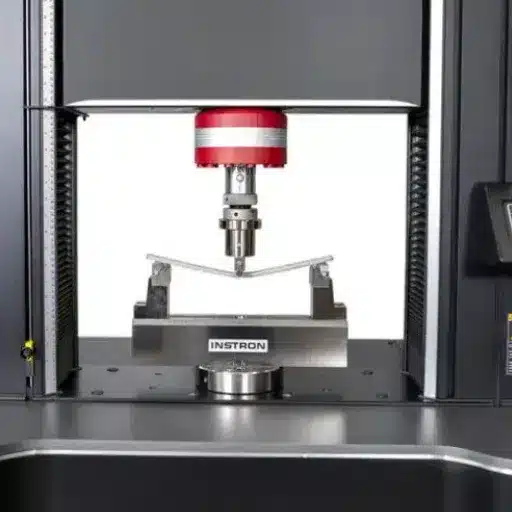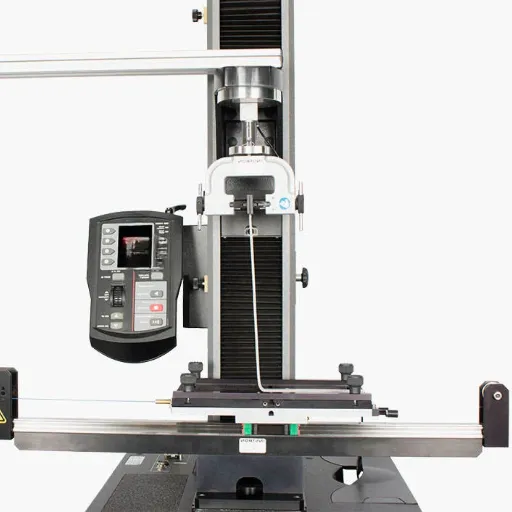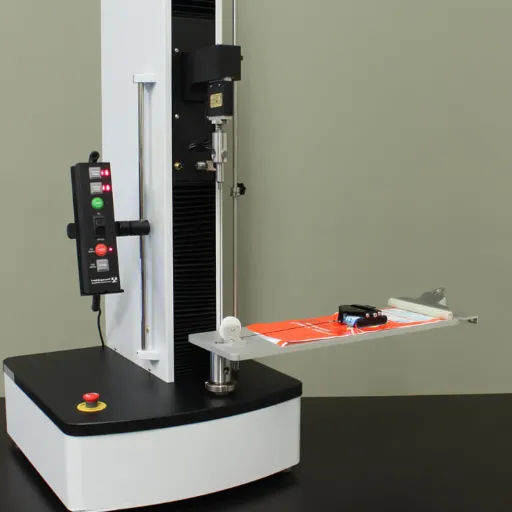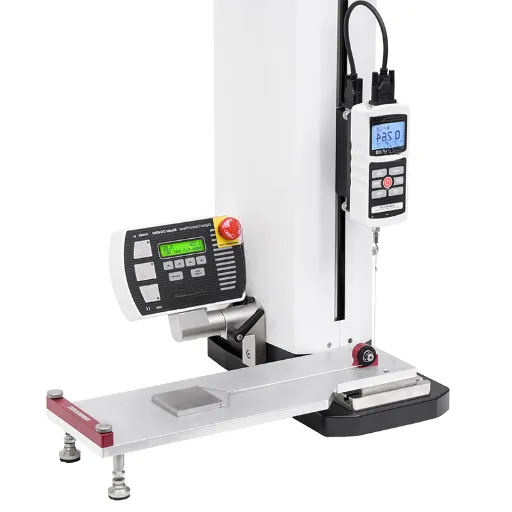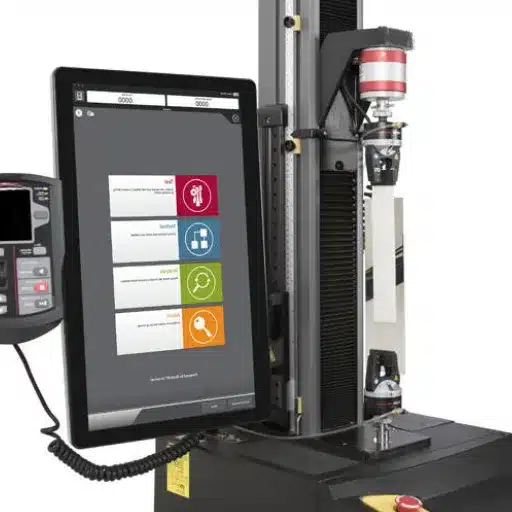Flexural and bend testing constitute two very important testing procedures for materials to be embarked on with assessments of strength and flexibility to ascertain reliability and performance. Such testing methods are applied in various industries such as construction and aerospace to ensure that the materials are able to withstand different stresses and conditions as would prevail in actual application. What exactly do these tests entail, and why are they needed? This article will delve into the basics of flexural and bend testing and, in doing so, throw light on their purpose, processes, and applications. If you are perhaps a materials scientist or an engineer or just somewhat curious about what makes a structure cemented, then this guide is full of some worthwhile information about measuring and understanding material behavior under load.
Introduction to Bend Testing
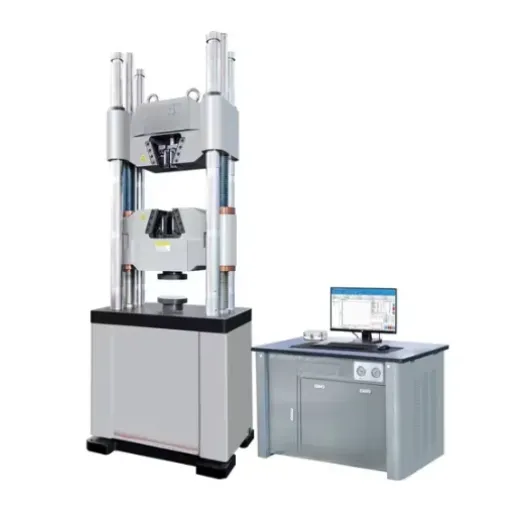
Understanding the Bend Test
Bend testing is commonly executed on a Universal Testing Machine (UTM), a device that can test materials for their mechanical properties against various types of load. The machine features fine controls and measurement systems that allow it to bend, pull, compress, or perform other tests on test specimens with utmost accuracy and repeatability. For the application of bend testing, fixtures are attached to hold the test material from one end and apply a controlled load from the other until the specimen deforms or fails.
A UTM applies a force; meanwhile, the specimen is placed and supported on two points while force is exerted from above, generally with a loading nose situated at the center. Important measurements such as the force applied, deflection until failure, and failure itself are recorded by the machine. Such measurements are vital in establishing flexural strength of the specimen, flexural modulus of the specimen, and general ability of the material to resist being deformed under load.
The testing finds its applications in a multitude of industrial sectors; it aims at confirming acceptance quality, durability, and safety of materials during application, whereas metals, plastics, ceramics, and composites are all involved as materials. The UTM, with utmost precision and flexibility, stands among the most important ones for any engineer and/or researcher when it comes to testing materials to meet application requirements. By efficiently providing detailed insight on material behavior, a Universal Testing Machine has become indispensable for material analysis and development.
Importance of Flexural Testing in Material Testing
Flexural testing is a very important element of material characterization since it assists in gauging the ability of a material to deform when a force is applied on it. Small bending loads give insights about the material’s behavior pertaining to bending, like its flexibility, stiffness, and yield strength. These measures are essential because they determine how much force the material can withstand under actual conditions before it gives in.
Key Insight: A UTM (Universal Testing Machine) is an instrument of flexural testing. The force is applied to a sample with great accuracy and measured accordingly. The typical force is applied either in a three-point or a four-point bending set-up, wherein the force is applied either until the material breaks or undergoes its maximum allowable deformation.
The parameters recorded for each test are load and displacement, which can be used to determine a number of material characteristics, such as flexural modulus and flexural strength. Such characteristics are used to determine whether the material conforms to given design and safety criteria.
The UTM allows for the accurate and repeatable execution of flexural testing, which aids in the processing and modification of materials to suit various applications, ranging from construction to aerospace, to consumer goods. This testing guarantees that materials are able to retain durability, functionality, and reliability, giving a major assurance to avoid the failure of materials in vital applications.
Applications of Bend Tests Across Industries
Construction Industry
Bend tests with the Universal Testing Machine are applied to assess strength and flexibility in industries where these properties are important. The construction industry applies these tests to find out if beams, columns, and other structural elements fulfill their design load. This really confirms that concrete, steel, and composite materials are all suitably strong, safe, and durable, so structural failures are avoided.
Aerospace Industry
In aerospace, bend tests have to guarantee the degree of reliability of aircraft wings, panels, and structural components. Here, the materials have to stand extreme pressure and temperature variations while retaining their strength. The test allows manufacturers to verify that the materials stand the very high safety criteria required for ensuring aircraft performance.
Consumer Goods
Bend tests also ensure proper functioning in the consumer goods industry, primarily for making furniture, tools, and packaging material. By these tests, it is guaranteed that the products are safe to use every day and fit to resist breakdown under wear and tear. Manufacturers can perfect quality level, increase durability, and put forth a product that satisfies consumer expectations by knowing about a material’s resistance to bending and deformation.
The Bending Test Process
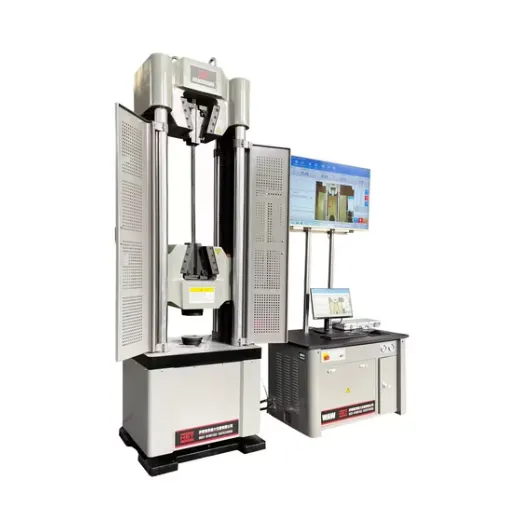
Overview of the Flexural Test Method
The flexural test method is conducted to observe the behavior of the material subjected to bending forces. The test sample is conveniently placed on two supports of the UTM, with an application of force on the center or at some points by the loading mechanism. This condition is similar to real-life situations when materials are subjected to bending or flexural stress. Flexural strength, flexural modulus, deformation resistance of the material, and resistance to fracture are measured.
A Universal Testing Machine is exceptionally versatile and highly accurate, having been designed to test various mechanical properties, of which flexural testing is one. It comprises a loading frame, a crosshead, and a load cell for the application and measurement of force. The UTM maintains a uniform application of force during the flexural test and collects appropriate data. The software in the system monitors and analyzes the results in real time and ensures the reliability of the acceptance or refusal of a material in meeting the prescribed performance level.
The information gained from the flexural test conducted by a UTM is very crucial to the manufacturer and engineer in identifying the limits of the material and further making decisions in product designing, quality control, and meeting safety regulations. Whether it performs with metals, plastics, or composites, Universal Testing Machine places before the industry to know for sure how materials behave when bending stress is exerted on them, and accordingly, industries are able to come forth with stronger and safer products.
Step-by-Step Guide to Conducting a Bend Test
Prepare the Material Sample
Choose the material sample in accordance with the dimensions and requisite specifications applicable for the test. The material must be flawless and devoid of cracks or deformities that may serve as interfering factors in determining the end result. Wash down with clean water; clean from all dirt, grease, or dust, etc.
Set Up the Universal Testing Machine (UTM)
Adjust the testing machine for loading the sample according to the sample size. Mount the sample on the supports provided, properly aligned and firmly held in position. Set the machine parameters such as speed of test, force range depending upon the nature of the material and test standards laid down to be followed such as ASTM or ISO.
Conducting the Bend Test
Initiate the test by applying force on the specimen using the loading device of the system. The specimen is now stressed in bending as the application of force continues. It is advisable to watch carefully the readings on the machine for maximum bending strength of the specimen, elastic limit, and possible point of failure. The force must be applied steadily and uniformly; otherwise, accurate readings might not be received.
Recording and Analyzing Results
After the test has been run, all data recorded by the UTM from such data as load at failure, bend angle, and response of the material must be taken and analyzed. Such data should be used for analyzing the performance of the sample under stress and whether it meets the required specifications or not.
Conclusion and Clean-Up
Remove the tested sample and debris from the machine carefully. Set the UTM up for another test or switch it down safely. Record the observations in a report that will be referred to for product design, product support, or further research.
Using a Universal Testing Machine for Flexural Testing
Universal Testing Machines, being accurate, adaptable, and reliable, are considered necessary for flexural testing. It simply pushes controlled forces into the material to measure how resistance it offers to bending when stress is applied. Testing, therefore, is useful for determining the mechanical properties of a material, such as metals, polymers, or composites. Testers or engineers use a UTM to understand how strong or flexible the material is under certain conditions.
Key Advantages of UTM
Some of the advantages of UTM include the precise control over the testing parameters. That is to say, it sets the speed of crosshead; it applies force accordingly, and all procedure is made in a consistent manner to have highly accurate results. This makes it highly crucial to be reproducible results, which thereby allows for comparing the behavior of material or adhering to workmanship standards. Continuous data acquisition can also be done during the test, which aids in detailed analysis of stress-strain behavior of the material.
Another advantage of UTM is its adaptability for testing applications besides flexural testings, thus making it most-right tools in the lab and industrial settings. Tensile, compression, shear tests can all be conducted with UTMs; plus, one machine can satisfy multiple testing demands. Such versatility saves both time and money, making UTMs an investment which will never lose value in the realm of quality control, product innovation, and research. In sum, the Universal Testing Machine has an instrumental role in helping, understanding, and improving material performance.
Key Equipment in Bend Testing
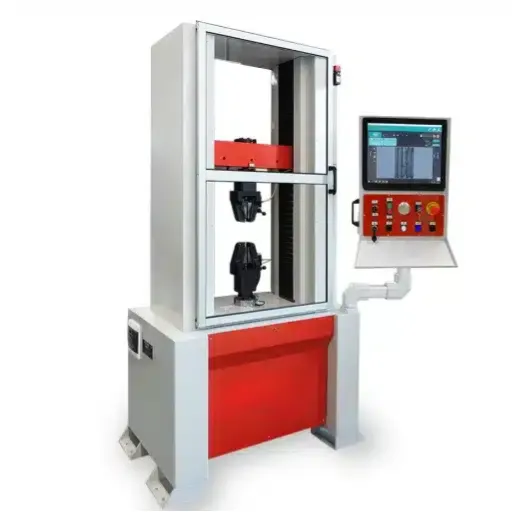
Components of the Universal Testing Machine
Various components in UTM are a combination of interacting elements working in unison to provide accurate material testing. Of the components, the load frame serves as a heavy sturdy structure to contain the test. The load frame usually consists of two crossheads: one fixed and one movable. These hold the material sample during the test.
Another important component is the load cell, which measures the specimen force. This transducer must be very accurate for the forces when the machine records the load data for different tests. Fixture supports connect the load cell to the specimen to permit tests such as tension, compression, and bending.
Another important component is the control and data acquisition system, for it governs the operations of the UTM. This system regulates the application of force, observes test progress in real time, gathers data on material performance, and does so under software control so users can customize and analyze tests with essential insight into material behavior under defined conditions.
Types of Bend Test Fixtures
Along with the mainframe, bend-test fixtures are among the vital components of a universal testing machine used for testing materials under bending load to measure their flexural strength and ductility. These fixtures exist in different configurations depending on the kind of material being tested and on the particular requirements of the test.
Three-Point Bending Fixture
One of the common types is a three-point bending fixture. In this test, two supports are kept at a predetermined distance apart and at the center is placed a load pin to apply force. This setup best determines the elasticity, strength, and fracture tendency of materials. It gives accurate results for both rigid and flexible materials.
Four-Point Bending Fixture
On the other hand, four-point bending is another option common in testing. Here, unlike three-point bending, the force is applied at two points between the supports, thereby making a more uniform distribution of stress. This method is preferably employed when materials show high susceptibility to localized stress concentration so as to provide a better assessment of their performance as a whole under working load.
Calibration and Maintenance of Testing Equipment
An accurate and reliable test result can only be achieved by properly calibrating and maintaining the Universal Testing Machine (UTM). For calibration purposes, the said machine needs to be regularly checked by trained persons following a recognized standard such as ASTM or ISO. This means checking the load cell of the machine, its means of displacement measurement, and so on, to ensure it remains accurate. With a periodic calibration, equipment has the assurance of providing accurate results all along its life. An equipment without such periodic calibration may result in erroneous results as the time elapses, culminating in data and analysis that are wrong.
Maintenance Requirements
Maintenance activities are also necessary in order to prolong the life and continued serviceability of a UTM. The operators should constantly look out for any display of wear and tear on the machine, check all connections, and make sure that all moving components are adequately lubricated. Preventative maintenance through good tidying-up needs to be carried out to ensure no accumulation of dust and dirt, especially in the testing chamber and around the load cell. Small problems should be tackled as they arise; for example, if there is an unusual noise from the machine or an abnormal movement, this should be addressed before it develops into a major mechanical failure.
In addition, calibration activities and maintenance activities need to be properly documented. Detailed documentation facilitates the tracking of the testing machine’s performance over time and ensuring adherence to the standards of quality assurance. This documentation will also come in handy when audits are performed and in certifying the testing machine to define its conformance to industry standards. Having all this in place ensures that laboratories and testing facilities can extract the best performance from their UTMs, thereby ensuring the credibility of their test results.
Evaluating Material Properties
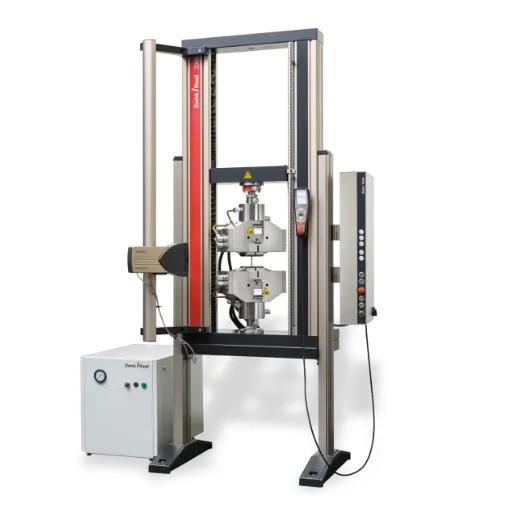
Assessing Strength, Flexibility, and Durability
Universal Testing Machines come into play in determining the strength, pliability, and cracking resistance of materials. By applying known loads and observing the consequences on the materials, UTMs measure in actual terms some of the principal mechanical properties. These tests are a basic insight into the behavior of materials under stress that helps in considering applications to which a material may be suitable for. The strength test essentially checks for the maximum force a material can take in a certain condition up to failure, which ensures that it is dependable for the aim assigned.
Flexibility Assessment: Flexibility tests usually encompass tests for elongation or bending depending upon how the material reacts against deformation until it breaks. Knowing this property is vital in the context of applications where materials further have to bend or stress repeatedly, down to construction or manufacturing. UTMs provide precise data about elasticity and ductility, allowing designers and engineers to pick materials that best fit their needs for an environment where flexibility is needed along with rigidity.
Durability Testing: In contrast, durability tests are on materials subjected to long-term usage, environment, and in service conditions. Under controlled conditions, UTMs simulate real-life stressors and present an estimation of a material’s life expectancy and guaranteed performance. These inspections come before automotive, aerospace, and construction industries, with concern for safety and longevity. To end with, UTMs are forerunners in material testing required for meeting the stringent conditions of modern engineering and design.
Predicting Real-World Performance of Materials
Universal Testing Machines hold a crucial position in the field of material testing because they predict the performance of a material under certain real-life situations. They are designed to apply well-calculated forces to test the strength, flexibility, and durability of a material against various types of stresses. By simulating the forces that the material is subjected to in real life, the UTM aims at providing engineers and manufacturers with insights on how materials will behave upon different loads and environments.
Commonly tested main properties include tensile strength, compression strength, and elongation limits. These tests may help determine if the material is worthy of its intended use in highly technical safety-oriented fields such as aerospace, automobile, and construction industries. Another point enabled by the test data is to identify the weak links in materials so that only good materials are allowed for use in production.
By simulating actual working conditions with the help of UTMs, manufacturers predict with certainty material behavior over time, which also aids in product design optimization and risk mitigation. Therefore, testing can also be a means to validate compliance with standards and hence to good product longevity and reliability. These have become indispensable techniques for modern engineering development where product performance and safety are insured.
Comparative Analysis of Testing Results
UTMs serve the basic purpose in testing the materials, i.e., in providing the mechanical properties of materials such as tensile strength, compressive strength, or elasticity. If testing results for different materials are to be compared, then the UTM has to have precise repeatable measurements in order for accurate evaluation to be made. For example, a steel sample tends to show greater tensile strength than the aluminum sample, and a polymer material tends to be much more elastic in comparison. Such comparisons help engineers in selecting the best material for a particular application.
The comparative analysis of test results also highlights how a material behaves differently under varying conditions. For instance, some materials may break down under prolonged stress, while others are able to sustain themselves. By means of UTMs, more detailed insight into such characteristics would be gained by subjecting a material to extreme environments-whether it be in high temperatures or rapid loading rates. The obtained information would then assist in the prediction of long-term behavior, and thus, would assist in making sure the product maintains longevity in the application of interests in aerospace, automotive, and construction industries.
Also, UTMs enable quick quality control, with direct comparison of the specified standard versus actual material behavior. Manufacturers, accordingly, can use the testing data to prove conformity to regulatory requirements or detect early deviations during manufacturing. This ensures the safety, reliability, and uniformity of all end products. In providing holistic insight from their analysis, UTMs support the decision-making process in engineering and design.
Challenges and Solutions in Bend Testing
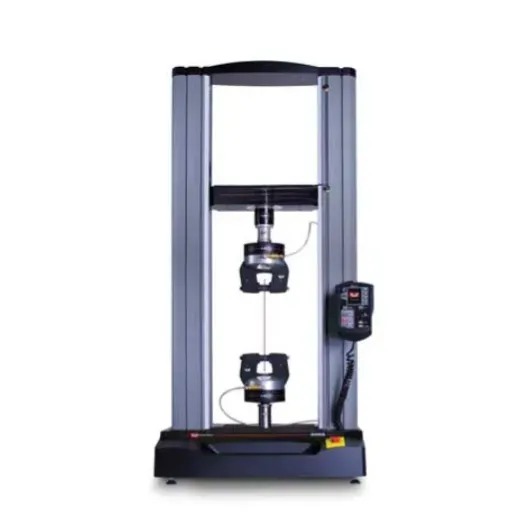
Common Issues Encountered During the Bend Test
Cracking and Fracturing
One issue during the bend test is cracking or fracturing within the test specimen. The presence of such defects generally suggests material weakness, such as low ductility or internal imperfections. To resolve this, a fix should be made so that the material is properly prepared, and the test specimen should be checked against the standard before testing. In addition, controlling the load application speed during testing might help avoid premature cracking.
Improper Alignment
The other issue would be that the test specimen is not properly aligned in the Universal Testing Machine (UTM). This misalignment could jeopardize the accuracy of testing results or cause a material to unexpectedly fail. To avoid this, testers should try to carefully position and secure the specimen so that it is aligned correctly with the bending supports. Also, regular calibration of the UTM will keep tests accurate and consistent.
Specimen Slipping or Improperly Supported
Specimen slippage or improper support during the test also undermines the results. The situation arises more often than not when the clamps or the supports fail to hold the material securely in place. This problem can be overcome by employing fixtures as appropriate and checking their status on a regular basis. Equally important is ensuring that the machine’s settings are in conformity with the material specifics for correctly measuring the material property for testing.
Ensuring Accuracy and Reliability in Results
Calibration is the most paramount activity to maintain accuracy and reliability when using the universal testing machine. The machine should be calibrated periodically following the calibration protocols established by international standards to maintain the precision of measurement. Calibration will eliminate error caused by mechanical wear or electronic malfunction, thus guaranteeing that the result keeps stemming out of what basically reflects the true properties of the material being tested.
Correct grips and fixtures must be selected for the material being tested. It will give inaccurate results if the fixtures cannot hold the test specimen securely, or if there is slippage or uneven distribution of stress. Always check if the clean grips are in good condition, or if they are compatible with the specimen’s geometry and material type before conducting the test.
The controlling of environment remains a priority for consistent-result delivery. Factors such as temperature, humidity, and vibrations do influence the behavior of materials, especially if the materials are sensitive. Tests should be carried out under controlled environmental conditions that match the intended use condition of the material. When one considers all the aforementioned important points of calibration, fixtures, and environment, one can be confident of the accuracy and reliability of any data that a universal testing machine will provide for material analysis.
Practical Solutions to Overcome Testing Limitations
Key Solutions
In overcoming the limitations in the usage of a universal testing machine, machine maintenance, calibration, and operator training must be entirely maintained. Regular maintenance keeps the components of the machine, including the load cells and grips, in top working order so that any interference with the accuracy of test results does not occur. The calibration of the system shall be performed on a periodic basis in accordance with recognized standards to ensure that the system produces reliable and reproducible data and to ensure that the equipment complies with other requirements.
Another practical solution is designing fixtures that are suitable for the material or sample undergoing testing. Fixtures designed poorly may cause the sample to be stressed unevenly or to fail in a manner not intended by the test; therefore, it nullifies valid results. Allowing fixtures that require testing to comply fairly well with sample geometry and material properties will almost eliminate the possibility of error. When testing a material that is very unusual or complicated, customized fixtures may be conceived so it exactly meets the needs of the application.
It is also very important to control the environmental conditions. Variations in temperature, humidity, or pressure during tests could influence or affect the material’ performances. To simulate the conditions that the material shall be subjected to during actual use and create some form of stability, the laboratory conditions need to be controlled. Further, an environmental chamber may also be integrated for testing to simulate extreme conditions, thus ensuring that the materials perform according to expectations under these different scenarios.
Frequently Asked Questions (FAQ)
Q: What is a bending test inside a universal testing machine?
A: Bending test in a universal testing machine is a standard test method to define flexural properties of materials by applying force until the tested material deforms or snaps. This test provides an estimate of performance of the material under bending load and forms an essential understanding of the mechanical properties.
Q: How does the three-point bending flexural test work?
A: The three-point bending flexural test is carried out by resting the specimen on two supports and loading at a single point in the center. From this setup, one can determine the flexural strength and also the flexural modulus of how the material reacts to bending forces.
Q: What are the benefits of employing a universal testing machine to perform bending tests?
A: Being versatile, a universal testing machine can perform bending tests and a variety of other mechanical tests. The machine has the facility to apply load at a given rate with pre-set tolerances and measures the outcomes at the same accuracy and resolution, hence producing very precise results.
Q: What could influence a bending test result?
A: Among other things, the shape and size of the specimen, material properties, test setup, and environmental conditions can influence test results. Another source for variability is improper calibration of the testing instrument and failure to adhere to standard test methods.
Q: What is the difference between three-point and four-point bending test?
A: The difference between these tests rests with load application. In a three-point bend test, it is a single load applied at the center, whereas a four-point bend test applies two loads at two points between which a constant bending moment exists. These two methods can produce different flexural properties.
Q: How do flexural properties of plastics compare with those of metals?
A: Usually, properties of plastics usually significantly differ from those of metals with respect to flexure because plastics are less stiff and strong. Metals may show higher values of flexural strength or modulus compared to plastics which, in turn, can be manufactured for specific performances under bending load.
Q: What is the use of modulus of elasticity in bending?
A: The modulus of elasticity in bending is vital in determining a material’s stiffness and resistance to deformation when loaded. This can help engineers and designers judge how a material will behave in real-life conditions when it is subjected to bending loads.
Q: What is analyzed during the bend and flexural testing procedure?
A: The bending and flexural testing procedure evaluates flexural strength, modulus of elasticity, and performance under bending loads. This information is essential for evaluating a material’s appropriateness for use in engineering projects and construction.
Q: What are the common uses of bending tests by universal testing machines?
A: Testing materials such as plastics, metals, and composites for the construction, automotive, and aerospace industries are typical applications of this test. This testing process yields important data required for quality control, material selection, and design verification.

